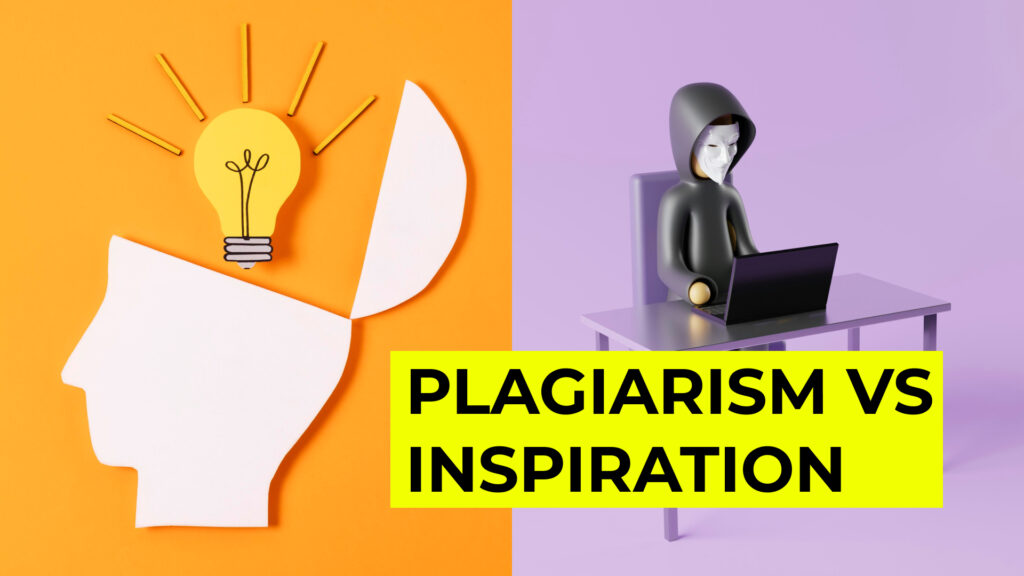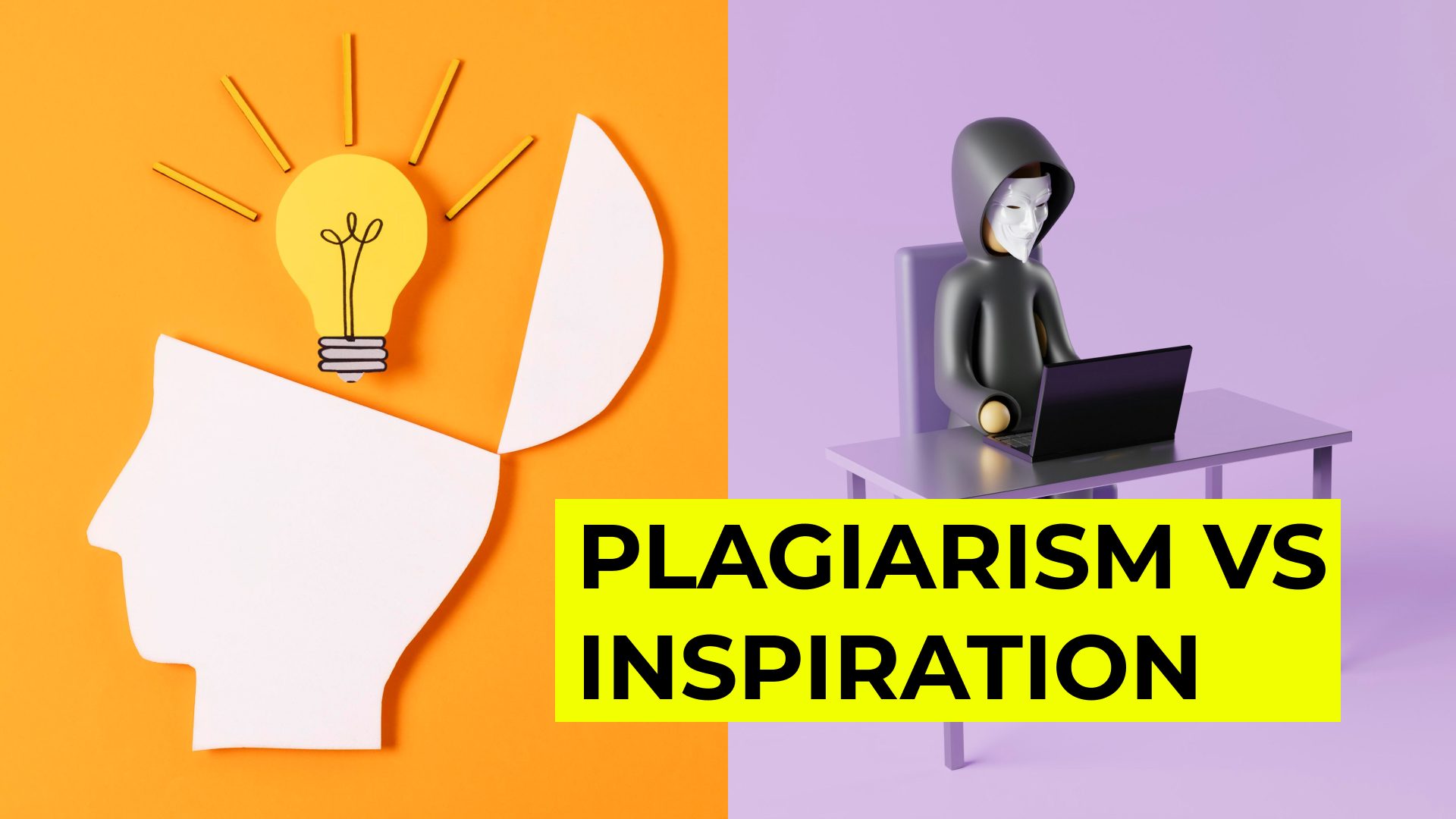In the modern world, where it feels like every idea has already been explored, the distinction between inspiration and plagiarism becomes increasingly unclear, challenging even the most creative individuals. Today, crafting something entirely original and unique seems nearly impossible. With millennia of human creativity behind us, most new ideas are often just a reimagining of what has come before. But what is reimagining? At what point does it stop being a robbery of someone’s original idea and become a product of inspiration? The thin ice of this dilemma is what we’re going to explore in this article.
Table of contents:
Inspiration ≠ Plagiarism
Basically, inspiration is about making something different out of existing concepts. In medical terms, we define inspiration as the act of breathing in. It’s like metaphorically absorbing ideas around you so as to transform and reinterpret them into something that reflects the prior designer’s vision but has a new twist from your personal perspective. Just as inhaling fresh air revitalizes the body, drawing inspiration breathes new life into existing ideas, allowing them to evolve into something distinct and authentic. The goal here is not to replicate but to innovate, taking the essence of what has inspired you and shaping it into a design that carries your personal touch.

What is plagiarism? Well, it’s a direct act of robbery. In simple terms, it involves bluntly copying or imitating someone else’s work without any given permission or credit. The person who commits plagiarism basically passes off another person’s ideas or designs as their own. And that is certainly not the right thing in both terms of law and ethics.
When does inspiration become plagiarism? A design inspired by another can easily slip into the realm of plagiarism if it doesn’t differentiate itself properly or give enough credit to the original source. Especially in an industry where trends and influences are the guiding lines, it becomes extremely easy to cross these vague borders. The conclusion here is that the fine line of the matter is often difficult to discern.
Why the Line is So Thin in Modern Design
Time and time again, the history repeats itself. The same goes for creativity and design, which has always been about borrowing, reconsidering, and building on previous works. Just like the era of the Renaissance was referencing classical antiquity, today’s latest fashion trends bring us back to the early 2000s. It seems to be a cyclical process where old ideas are continually rediscovered, refreshed and made relevant again for new generations.
And if we talk about modern times of the digital era, this cycle has only accelerated. This blurs the lines between the old and the new, pushing designers to find innovative ways to pay homage to past influences while carving out their unique voices in the present. Creators are constantly exposed to a flood of images, ideas, and styles, making it easy to unintentionally mimic someone else’s work. Additionally, the rise of artificial intelligence in design has introduced new challenges, as AI-generated content can blur the lines between original creation and plagiarism.

With everyone connected and sharing ideas, a lot of designers are inspired by the same stuff, leading to similar results even if they’re working independently. It’s all part of a shared visual language that reflects what’s happening in the world right now rather than direct imitation.
And whenever you need to compare your designs, you can always count on Approval Studio tools. While it might not downright distinguish between plagiarism and inspiration, the compare mode can be really useful for spotting differences between versions, making your creative process much easier. This can help see how your designs evolve and make sure they’re staying true to the original intent and your corporate branding. And this is just a glimpse of all the useful features and collaborative solutions for design proofing we have to offer.
Drawing the Line Between Inspiration and Plagiarism
Using parts of another design to create something new is one thing, but outright copying an entire design is a whole different story. A homage, for example, is an intentional reference to another work, which can use its specific elements, such as style or composition, but with its own spin on it. This is an act of acknowledgement and respect, which also brings a fresh view of the original creation.
Very few things in the world are genuinely original. Being a designer means observing and studying those who came before. Great artists steal, you hear them say. Great artists know how to take elements from various sources and cook them up in a way that is fresh and authentic. For instance, a fashion designer could take inspiration from traditional Japanese kimonos but reimagine them as sleek, contemporary streetwear.
Legally, plagiarism in design is defined by copyright law, which protects the original works of creators. If you copy big chunks of someone else’s design without permission, you’re stepping into plagiarism territory. To avoid legal issues, a design must be sufficiently different from the original — what courts often refer to as “substantial similarity” is a key factor in these cases.

But it’s not just about the law — plagiarism is also an ethical issue. It’s about respecting the hard work and creativity of the original designer and, furthermore, respecting yourself. When you plagiarize, you’re not only breaking the rules and potentially damaging someone else’s reputation and career but also ruining your own style and value. Being an ethical designer means giving credit where it’s due and making sure that any design inspiration you take is turned into something that adds value, not just a copy of someone else’s work.
Impact of Plagiarism
In the dynamic world of technology, intellectual property disputes can have far-reaching consequences for companies. They may face substantial legal fees, potential fines, and compensation payments if they are found to have infringed on another’s patents or copyrights. For instance, in high-stakes cases, settlements or damages can reach hundreds of millions of dollars, straining financial resources and impacting profitability.
Seven-year-old smartphone patent wars took place in the 2010s. The industry giant, Apple, called Samsung out on copying the design of their iPhone and iPad, particularly its rounded corners, bezel, and home screen layout. In response to Apple’s initial lawsuit, Samsung accused Apple of infringing on various Samsung patents. Consequently, after years of legal battles, in 2018, Samsung agreed to pay Apple $539 million as part of a settlement.

For Apple, the case was crucial in defending its innovative designs and maintaining its competitive edge in the market. The legal victory reinforced Apple’s reputation as a design leader and emphasized the importance of protecting intellectual property in technology.
As for Samsung, they faced significant financial penalties and reputational damage, as the case portrayed the company as a copyist rather than an innovator. Although Samsung remains a major player in the smartphone industry, the case highlighted the risks associated with infringing on design patents and the potential costs of legal disputes in the highly competitive tech sector. No one is safe, not even industrial giants.
How to Avoid Plagiarism While Seeking Inspiration
Obviously, the best way to avoid plagiarism is to stay true to yourself. If you obtain your own distinct style which reflects your personal vision, you’ll get your brand identity as a designer. Experiment, refine your skills, and don’t be afraid to express yourself. Undoubtedly, there will be times when your design borrows elements or is directly inspired by someone else’s work. Be transparent about it. Proper attribution to the design collaboration not only shows respect for the original creator but also protects you from accusations of plagiarism.
Another strategy is drawing inspiration from different sources rather than just one. You can try and combine various elements and cook up something third eventually. Although, one more tip would be to seek feedback. Ask your fellow designers to comment on your works and pinpoint any similarities to other creators that you hadn’t noticed. As well as that, participate in design communities where you can share your work in progress; you may stumble upon some interesting insights there. Oh, and let’s not forget about learning some basics of copyright law. If you’re familiar with what constitutes fair use and what’s a derivative work, you’ll always have an ace up your sleeve.

Staying informed about industry trends and legal standards is also crucial for avoiding plagiarism. The design world is constantly evolving, and what is considered original today may be seen differently tomorrow. Just keep yourself updated on the current trends and regularly review your own work in light of new information on the legal side. A commitment to continuous learning and adaptation will not only help you avoid plagiarism but also foster your growth as a thoughtful and ingenious designer.
Conclusion
As you continue your creative journey, remember that the true essence of design lies in innovation. Push boundaries, experiment boldly, and always seek to bring something new to the table. While it’s natural to draw ideas from the vast array of creative works that have come before, it’s equally important to respect those creations and give credit where it’s due. Designers should strive to infuse their work with their unique voices, ensuring that their contributions to the design community are both innovative and authentic. Remember that inspiration is about reimagining and adding value, while plagiarism is an unethical appropriation of someone else’s work.

 TEAM SOLUTIONS
TEAM SOLUTIONS WORKFLOW SOLUTIONS
WORKFLOW SOLUTIONS



 REVIEW TOOL
REVIEW TOOL PROJECT MANAGEMENT
PROJECT MANAGEMENT TOOLS & INTEGRATIONS
TOOLS & INTEGRATIONS
 CLIENT INTERVIEWS
CLIENT INTERVIEWS









